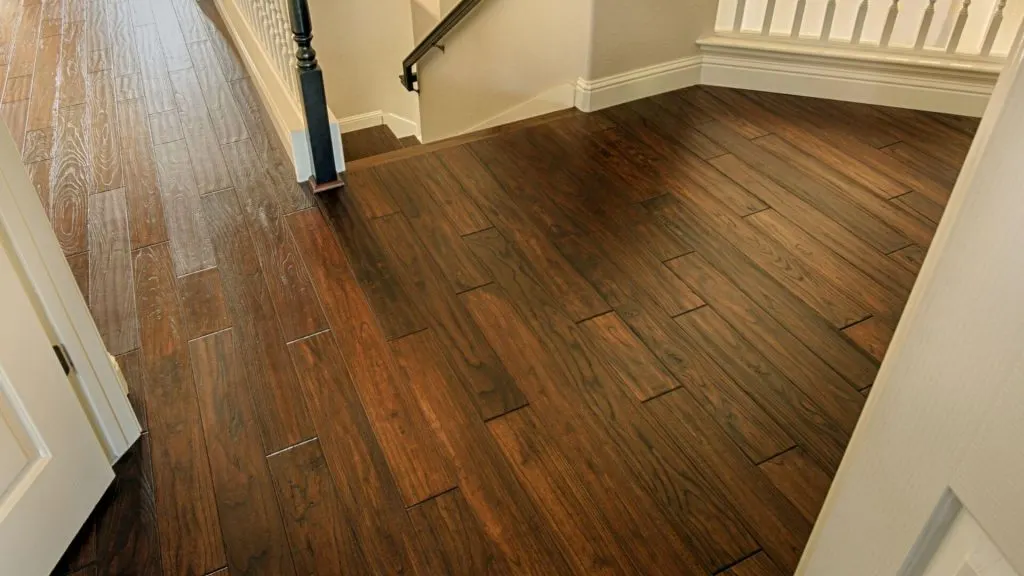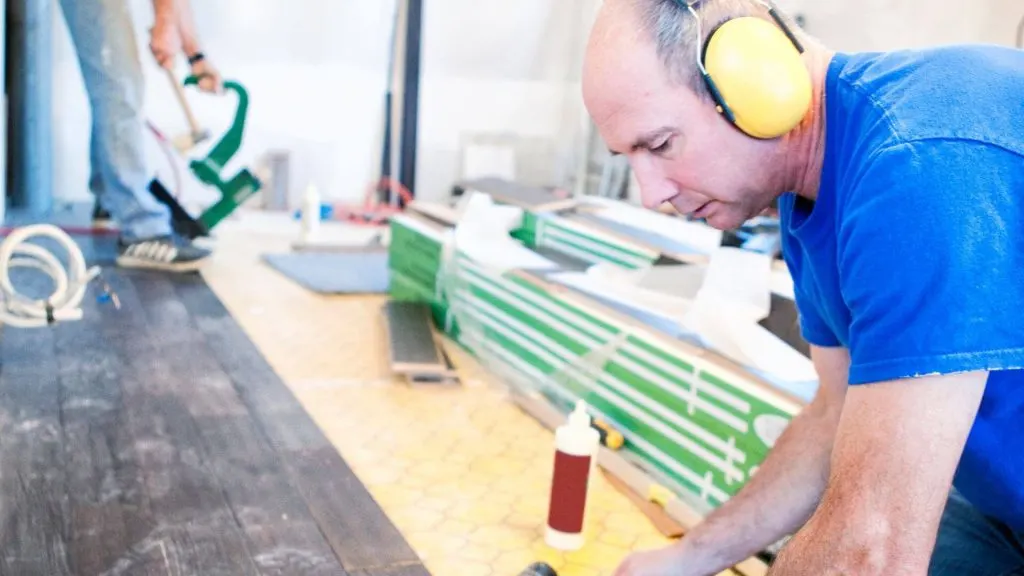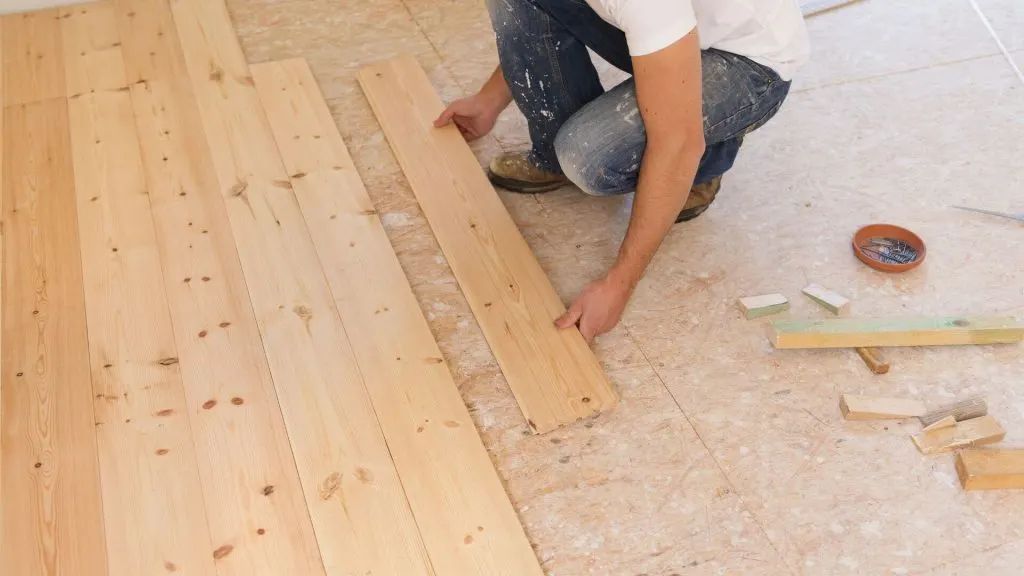If you’re planning on remodeling your home, one of the things you’ll need to think about is how to do transitions between two different floors. It can be tricky, but with some know-how, you can do it easily and efficiently. This blog post will discuss some of the best ways to transition between two floors in your home. It will also provide tips and advice for making the process as smooth and seamless as possible. So if you’re ready to learn more, keep reading!
How to Transition Between Two Flooring Types

Understand the Different Types of Flooring
The first step in successfully transitioning between two floors is understanding the different flooring types. There are many different options available, each with its unique set of characteristics. For example, hardwood floors are trendy, but they can be challenging to match with other types of flooring. Therefore you need a team that understands the details of combining two floor types to create a stunning and functional result. Additionally, it would be best if you considered the different thicknesses of each flooring type, especially if you’re planning on using a transition strip. The strip should be slightly thinner than the floors connecting, so it sits flush with both surfaces. Otherwise, it will create a tripping hazard.
Next, you have to take into account the height difference. This will affect how the doorways are cut and where the thresholds will be placed. If there is a significant height difference, you might need to use a ramp or another type of transition piece. But if the height difference is slight, you can probably use a simple threshold.
Finally, it would be best to consider each flooring type’s different colors and finishes. For example, if you’re transitioning from a dark hardwood floor to a light tile floor, you’ll want to use a transition strip darker than the tile but lighter than the hardwood to create a smooth and visually appealing transition between the two floors.
In areas prone to moisture or spills, incorporating design with water resistant flooring can mitigate potential damage, ensuring longevity and durability of both flooring types in the transition. Just remember, the key is to make sure that the transition looks intentional and not like an afterthought.

How to Transition Between Floors
Now that you understand the different types of flooring, it’s time to learn how to transition between them.
Decide Where You Want the Transition to Occur
The first step is to decide where you want the transition to occur. It is usually at the door, on the edge of a room, or in the hallway. It can also be in front of a fireplace or between two rooms. You need to measure the space: it will help you determine how much material you need and what size transition strip you’ll need to use.
It’s also a great time to consider how lighting can complement the new layout. Upgrading your lighting can dramatically enhance the look and feel of the space. You might want to explore lighting stores in Houston to find fixtures that match your new flooring and overall design. Proper lighting can help define spaces and create a more cohesive transition between flooring types.
Prepare the Flooring Surfaces
This means cleaning them and making sure they’re free of debris. If you’re dealing with hardwood floors, you might want to get professional hardwood floor cleaning services to ensure that your floors are in the best condition possible before transitioning.
You might also need to sand or level the surfaces to ensure a smooth transition.
Install the Transition Strip
This is a strip of wood or metal that sits on top of the two floors and covers the seam between them. Transition can be done by nailing, screwing, or gluing it. It’s essential to ensure that the strip is slightly thinner than the floors, so it sits flush with both surfaces. Additionally, you’ll want to choose a color or finish that contrasts with both floors to create a smooth and visually appealing transition.

Cut doorways carefully
When transitioning between two floors, it’s essential to pay careful attention to the doorways. The height difference between the two floors will affect where the doorways are cut and where the thresholds are placed. If there is a significant height difference, you might need to use a ramp or another type of transition piece. But if the height difference is slight, you can probably use a simple threshold.
Use Irregular Patterns
If you’re transitioning between two floors with different colors or finishes, you can use an irregular pattern to help mask the transition. For example, if you’re transitioning from a dark hardwood floor to a light tile floor, you could use a zigzag pattern. This will help create a smooth and visually appealing transition between the two floors.
Choose the Right Flooring for Your Home.
There are many different flooring types available, each with its unique characteristics. Therefore, choosing the type that best suits your needs and preferences is essential. If you’re unsure which type is right for you, consult a flooring expert. They will be able to help you choose the best type of flooring for your home.

Finish the Transition.
Finishing can be done by adding trim or molding around the edge of the transition strip. You can also use a caulk to fill any gaps between the two floors. Once you’ve finished, you should have a smooth and seamless transition between your two floors.
With these tips in mind, you’re ready to start transitioning between two different floors. Just remember to take your time, be careful, and consult with a professional if you’re not sure about something. With a little effort, you can create a stunning and functional transition that will last for years.
If you’re investing in brand-new flooring, then why not ensure that you have a new doormat to accompany it? Not only will a doormat help stop dirt, debris, and water from damaging your new flooring, but it can provide a personalized touch to your home. Unlike other materials, coir is a smart choice for your next doormat due to its durability. Made from coconut husk, coir is a material that is water-resistant and tough, so perfect for getting rid of those troublesome bits of mud that leave stains and marks in your house. Additionally, it is very low maintenance so can be cleaned by leaving a dry foam on, then scrubbing to remove debris. Combined, these are all reasons why a coir mat can be a perfect addition to your home to protect that new flooring.
For a range of excellent coir mats, synthetic coir mats and more take a look at https://www.makeanentrance.com/coir-door-mats/pvc-backed-coir-matting-cut-to-size.htm
Make an Entrance offer various options for your coir matting including the option to have it cut to size! You’ll be sure to find the right doormat for your home in their range of excellent doormats.

Jessi is the creative mind behind The Coffee Mom, a popular blog that combines parenting advice, travel tips, and a love for all things Disney. As a trusted Disney influencer and passionate storyteller, Jessi’s authentic insights and relatable content resonate with readers worldwide.

How to Create Emergency Plans for Your Home
Wednesday 3rd of May 2023
[…] within easy reach is a good idea. You never know when there might be an accident or injury in the home, and you need to be ready to deal with those situations adequately. Having some bandages and other […]